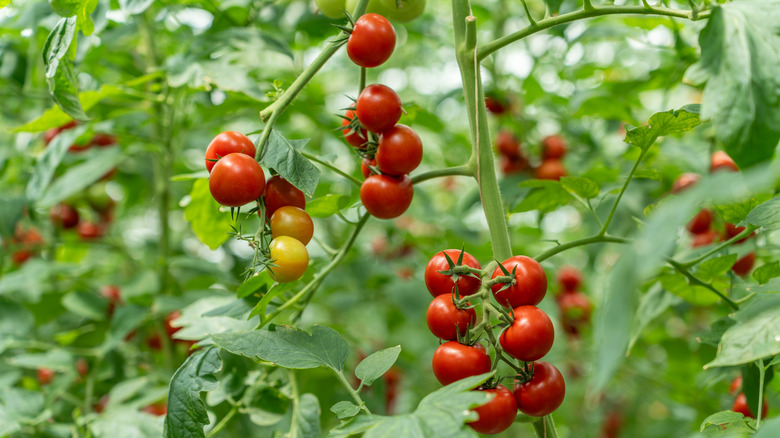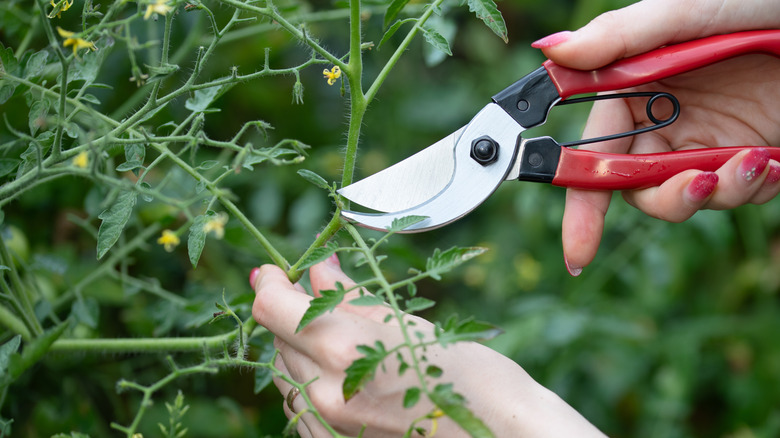The Best Way To Prune Cherry Tomato Plants For A Bountiful Garden Harvest
Whether you enjoy them roasted, sun-dried, or just plucked fresh off the vine, cherry tomatoes are the flavor of summertime. There are nearly endless applications for your crop — salads, pasta sauces, stuffed cherry tomatoes, and more. With some careful pruning and training, you may be able to maximize the yield of your cherry tomato plants to provide the biggest harvest that you could possibly use. You'll want to begin by making sure your cutting tool, whether it's shears, snips, or a knife, is clean and sharp. Disinfecting your tool between uses on different tomato plants can help prevent the spread of tomato blight and other diseases.
Keep in mind that there are two categories of tomato plant: Determinate (bushy, compact growers that produce only one crop of fruit) and indeterminate (plants with sprawling growth that produce fruit over an extended period of time), and there are a few differences in how you should approach pruning for each. The majority of cherry tomato varieties will appear on the indeterminate tomato plant list, but there are a few, such as 'BHN 268', that are determinate. Although both types can benefit from the support of stakes or a cage, it's of greater importance to provide indeterminate varieties with support due to their wandering growth habits. Do a bit of research to figure out which type of cherry tomato plant you have before forming a pruning strategy.
When and how to prune cherry tomatoes
Determinate tomatoes tend to require minimal pruning, unlike indeterminate tomatoes. Essentially, you'll just need to prune the lowest six or seven suckers on the main stalk. Just make sure you wait for the plant to begin flowering and only prune beneath the first flowers; tomatoes that grow beneath this point tend to be small. The goal is to improve airflow without pruning too aggressively, which can limit your tomato yield.
Indeterminate varieties — also known as vine tomato varieties — require a more involved approach, starting when the plant is young. Before the plant reaches approximately 18 inches high, don't allow it to flower or fruit. Instead, snip off all flower clusters to delay tomato production until the plant is a bit bigger; this allows the plant to focus all of its energy on root and foliage growth.
You'll need to decide whether to train your plant to have one or two leaders, or main branches. A two-leader system, which consists of the main stalk and one strong sucker trained into a Y shape, tends to produce more fruit. To create the Y, pinch off the leaves to the first cluster of flowers. Leave the sucker just under the first flowers, pruning off all others beneath it; make sure to keep up with any new suckers, especially for the first six weeks, and don't leave suckers until they're too thick (about a pencil's thickness), or removing them may wound the plant.

